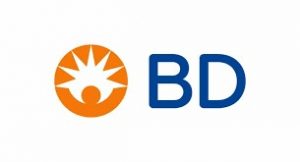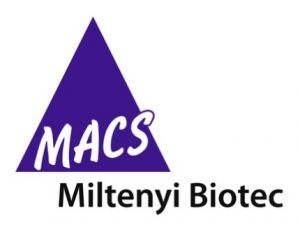Cutting Edge Flow Cytometry for Pathogen Related Research (29th January 2024)
Javier Gilbert Jaramillo and Amy Napier
Nuffield Department of Clinical Neurosciences, and Sir William Dunn School of Pathology, University of Oxford
“Flow cytometry-based cellular modelling for the study of viral infection and pathophysiology.”
The use of hiPSC to study viral infections is of great attraction. However, hiPSC efficient differentiation and maturation still imposes complications in disease modelling. Zika virus (ZIKV), a neurotropic virus that primarily infects the fetal developmental brain, has been thoroughly studied since its outbreak in 2016. However, intrinsic cellular diversity within maturing neuronal cultures from hiPSC and the contribution of these cellular subtypes to ZIKV pathogenesis is yet to be determined. Similarly, studies on SARS-CoV-2 using hiPSC-derived models have failed to study cellular subpopulations within cultures that may display greater susceptibility to infection. Herein, we showed the advantage of using flow cytometry over currently used techniques such as immunocytochemistry for the characterisation of cellular subpopulations within cultures with potential relevance for viral infection and pathogenesis. Results showed that neuronal cultures comprising greater levels of undifferentiated neuronal progenitors were differentially susceptible to ZIKV infection, this mirroring epidemiological data. Moreover, flow cytometry-based analysis reflected a small subpopulation of macrophages with greater levels of SARS-CoV-2 entry receptor (ACE2) which may underlie disease-relevant mechanisms. Thus, the use of flow cytometry for the characterisation of cellular cultures may signify a powerful tool to study viral cell cycle and pathogenesis.
Ting Lee
Engineered Biotechnology Research Group, Department of Engineering Science, University of Oxford
“Quantifying Bacterial Species in Co-Cultures using Natural Fluorescence.”
To realise the potential advantages of co-cultures over monocultures in bioproduction (e.g. broader substrate utilisation, increased yield/robustness), compositional control is needed to prevent fitness differences from causing one species to overwhelm another. Here, a two species E. coli – P. putida co-culture is dynamically controlled in a cybergenetic loop where a computer monitors the composition and adjusts their respective growth rates in real time. The relative abundance is inferred from OD measurements and fluorescence of a siderophore only produced by P. putida, while the growth rates are tuned by adjusting the temperature, a process that is automated on the Chi.Bio bioreactor platform. In order to build a model of the system and verify the population estimations from OD & fluorescence, flow cytometry was used to quantify the relative abundances of each species. While theoretically simple to distinguish, flow measurements required some optimisation due to the fact that the siderophore behaves differently to traditional fluorescent proteins, with certain conditions causing it to exit P. putida (creating false negatives) and even enter E. coli (creating double positives). In addition, experiments may be several days long with periodic sampling (e.g. every 2 hours), meaning samples had to be stored without significant signal deterioration
Carolyn Nielsen and Kirsty McHugh
Draper Lab, Vaccine Development and Antibody Immunology, Department of Biochemistry, University of Oxford
“B cell immunogenicity analyses and monoclonal antibody production using samples from malaria vaccine clinical trials.”
The Draper group in the Department of Biochemistry focuses on development of vaccines and monoclonal antibodies (mAbs) against blood-stage malaria parasites. Fortessa X20-based flow cytometry is used to interrogate human B cell responses following vaccination, while single cell sorting of antigen-specific B cells on the Aria Fusion enables monoclonal antibody production. Both approaches leverage fluorophore-conjugated vaccine antigen probes which bind to antigen-specific B cell receptors on the cell surface or, if cells are fixed, to intracellular antigen-specific antibody. This talk will highlight data from a recent trial testing two vaccine platforms for delivery of Plasmodium vivax malaria DBPRII: viral vectors (ChAd63, MVA) and protein/adjuvant (PvDBPII with Matrix-M). Using CITRUS and FlowJo, we report enhanced induction of DBPRII-specific plasma cell and memory B cell responses in protein/adjuvant versus viral vector vaccinees. Within protein/adjuvant groups, delayed boosting further improved B cell immunogenicity as compared to a monthly boosting regimen. This talk will also give an overview of ongoing mAb projects, including insights gained from a recent analysis of over 200 human IgG mAbs against the P falciparum vaccine candidate RH5.
Caitlyn Martin
Product Manager, Cell Analysis and Sample Preparation, Miltenyi Biotec
“Multiparameter flow analysis of antigen- and virus-specific T cells.”
It cannot be underestimated how important flow cytometry and flow sorting can be in gaining a better understanding of viral infection, in particular COVID-19. For example, analysing the immune cells might help us to understand why some patients show severe complications while others are nearly asymptomatic. MACS® Flow Cytometry Kits and REAfinity™ Recombinant Antibodies are optimized for lowest background, highest reproducibility, and most precise results. Our MACSQuant® Tyto® Cell Sorter allows gentle and sterile sorting of rare virus-specific T cells in a closed aerosol-free cartridge system.
This meeting is kindly sponsored by: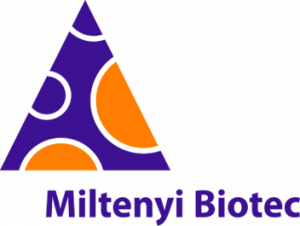
Cytometry User Group Meeting (08 November 2023)
Andrew Armitage, PhD
Senior Postdoctoral Scientist, Drakeshmith group: Iron and Immunity, Molecular Haematology Unit, MRC Weatherall Institute of Molecular Medicine, University of Oxford
“Development of a CyTOF-based workflow to investigate interactions between iron and immune system development in Bangladeshi infants”
Dr. Praveen Weeratunga
PhD student, Ho Group: Translational Lung Immunoloyg, MRC Translational Immune Discovery Unit, MRC Weatherall Institute of Molecular Medicine, University of Oxford
“Single cell spatial deconvolution of immune response in lung injury and fibrosis”
Michalina Mazurczyk
Facility Manager, Mass Cytometry Facility, MRC Translational Immune Discovery Unit, MRC Weatherall Institute of Molecular Medicine, University of Oxford
“Research project focused support in the WIMM Mass cytometry facility. Accompanying projects from planning to data analysis”
Dawar Pasha
Field Application Specialist, Standard Biotools
“Cytometry for the Masses – an introduction to CyTOF”
This meeting was kindly sponsored by: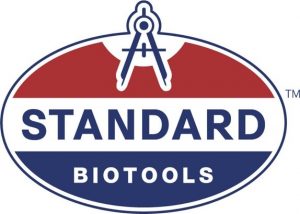
Full Spectrum Cytometry User Group Meeting (18 April 2023)
Yavuz Yazicioglu
PhD student, Clarke Group – KIR
“Flow cytometric characterisation of mitochondrial and metabolic parameters at cellular and subcellular scale”
Pablo Cespedes
Postdoctoral Research Associate, M Dustin Group – KIR
“Developing strategies to study the diversity of extracellular particles
using Spectral Flow Cytometry”
Adam Davison
Regional Mgr./Snr Technical Applications Specialist, Cytek Biosciences
“Full Spectrum Profiling (FSP)™ – Best Practices and Tools to High Parameter Panel Design Success”
This meeting was kindly sponsored by:
Cytometry User Group Meeting (13 December 2022)
Yi-Ling Chen
Senior Postdoctoral Scientist, Cutaneous Immunology Group, Molecular Haematology Unit, MRC Weatherall Institute of Molecular Medicine
“The contribution of Group A streptococcus infection to the development of psoriasis”
Isabela Pedroza-Pacheco
Postdoctoral Research Associate, NDM Immuno-Oncology
“Understanding the immunological environment associated with development of bnAbs in HIV-1 infection to inform vaccine design”
Sharon Sanderson
Flow Cytometry Application Scientist / Product Manager, Bio-Rad Laboratories
“Build bigger, better panels with StarBright Dyes”
This meeting was kindly sponsored by: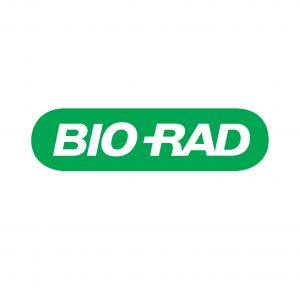
Attune related Cytometry User Group Meeting (22 October 2021)
Caitlin O’Brien-Ball
DPhil Medical Sciences, Davis Lab, Weatherall Institute of Molecular Medicine, University of Oxford
“Assessing the Effect of TCR Expression on T Cell Activation”
Megan Teh
DPhil student, Drakesmith group, MRC Human Immunology Unit, MRC Weatherall Institute of Molecular Medicine, University of Oxford
“Characterisation of T-cell biochemistry during cellular iron restriction”
Saty Kaur
Technical Sales Specialist, Flow Cytometry, Life Sciences Solutions, Thermo Fisher Scientific
“Seeing is Believing: Showcasing the Invitrogen Attune™ CytPix™ Flow Cytometer”
This meeting was kindly sponsored by:
Spectral Cytometry User Group Meeting (27 May 2021)
Jennifer O’Sullivan
MRC Clinical Research Training Fellow, MRC Weatherall Institute of Molecular Medicine, University of Oxford
Spectral Cytometry with the Aurora: Performing science at the end of the rainbow
Vendula Sinkorova
Field Application Scientist, Sony Biotechnology
Expanding the boundaries of cell analysis with the ID7000 Spectral Analyser
This meeting was kindly sponsored by:

Spectral Cytometry User Group Meeting (09 March 2020)
Adam Davidson
Technical Application Specialist, Cytek Biosciences
Spectral Cytometry with the Aurora: Performing science at the end of the rainbow
Nicholas Provine
Postdoctoral Fellow, Translational Gastroenterology Unit, University of Oxford
Characterization of human intestinal tissue-resident memory T cells by single-cell sequencing and high-dimensional spectral cytometry
Jakob Theorell
Clinical Research Fellow, Nuffield Department of Clinical Neurosciences, University of Oxford
On photon counting errors and unconventional spectral unmixing
This meeting was kindly sponsored by FlowCEL
(UK distributors for Cytek Biosciences)
‘Driving Deeper Discovery with High Parameter Flow Cytometry’
Cytometry User Group Meeting (06 February 2019)
Laura Denney
Senior Postdoctoral Scientist, Weatherall Institute of Molecular Medicine, University of Oxford
‘Examining macrophage heterogeneity using single cell analysis and flow cytometry’
Mariolina Salio
Clinical Research Fellow, Weatherall Institute of Molecular Medicine, University of Oxford
‘Ligand-dependent modulation of MR-1 restricted antigen presentation’
Morgan Blaylock
High End Instrument Support Specialist, BD Biosciences
‘Driving Deeper Discovery with High Parameter Flow Cytometry’
This meeting was kindly sponsored by:
Cytometry User Group Meeting themed on Imaging Cytometry (20 September 2018)
Prof Stephen Cobbold
Emeritus Professor of Cellular Immunology, Sir William Dunn School of Pathology, University of Oxford
‘Exploiting the power of the ImageStream: dispelling myths and some new IDEAS’
Dr Andrew Filby
Flow Cytometry Core Facility (FCCF) Director, Newcastle University
‘The Label-free CDs project: can we phenotype immune cells by label-free approaches’
Dr Owen Hughes
Imaging Flow Cytometry Specialist, Merck
‘Imaging Flow Cytometry: The what, the why, the how and the future’
This meeting was kindly sponsored by:
CyTOF themed Cytometry User Group Meeting (15 May 2018)
David Ahern
Research Associate, Kennedy Institute of Rheumatology, University of Oxford
‘An introduction to CyTOF’
Michalina Mazurczyk
Flow/Mass Cytometry Specialist and Facility Manager, Weatherall Institute of Molecular Medicine, University
of Oxford
‘You have your CyTOF data. Now what?’
Raymond Chan
Product Manager, Proteins and Antibodies, Bio-Techne
‘Validating Antibodies: Lessons from 30 Years of Antibody Development’
This meeting was kindly sponsored by:

Inaugural Meeting (11 May 2017)
Derek Davies
FlowCytometryUK Chairman and Flow Cytometry Manager at The Francis Crick Institute, London
Cell proliferation using flow, imaging and label-free technology
Tiago Luis
Postdoctoral Research Fellow, Weatherall Institute of Molecular Medicine, University of Oxford
High end flow cytometric analysis of samples with limited cell numbers: Characterisation of thymopoiesis-initiating progenitors in the mouse embryo
Jane Wood
Flow Cytometry Specialist, Miltenyi Biotec
Improving flow cytometry standards with recombinantly engineered antibodies
This meeting was kindly sponsored by:



